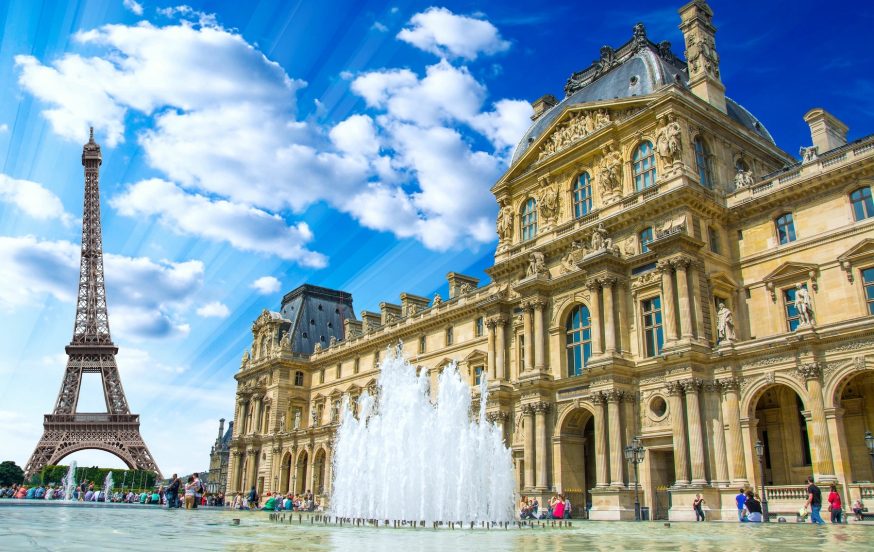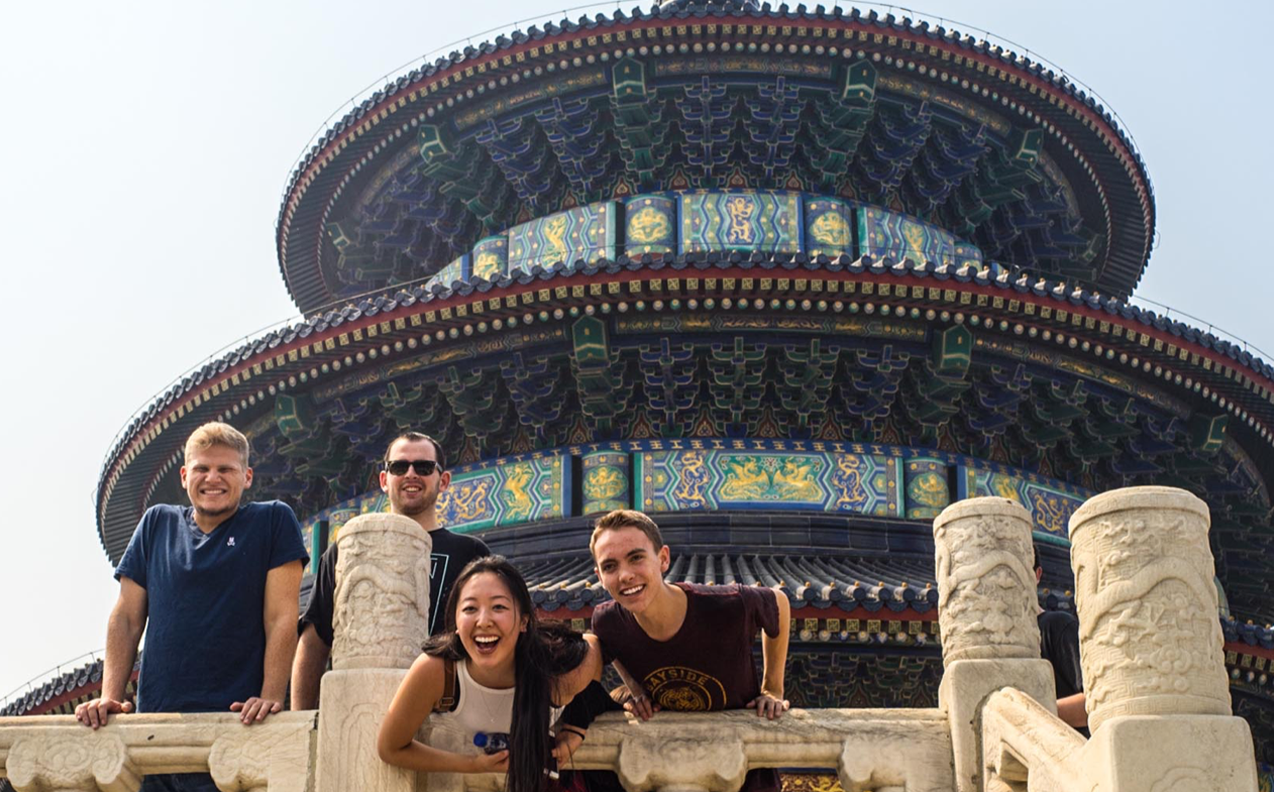- Board your flight Begin your journey to Paris, France.
The Art of France & Spain
Embark on an unforgettable educational journey through the cultural heart of France and Spain. From the iconic streets of Paris to the coastal charm of the Basque Country – this immersive tour brings history, art, and language to life.
Request Info Request Quote
https://worldstrides.com.au/itineraries/the-art-of-france-spain
The Art of France & Spain
Embark on an unforgettable educational journey through the cultural heart of France and Spain. From the iconic streets of Paris to the coastal charm of the Basque Country – this immersive tour brings history, art, and language to life.
Request Info Request Quote9-12 days
 Destinations
Destinations
France: ParisSpain: Madrid, Barcelona, Basque Region
Your Adventure
-
Paris city walk
Île de la Cité, Notre-Dame Cathedral, Île St. Louis, Latin Quarter
This city was made for walking. Stroll grand boulevards with sweeping views of the city, pristine parks with trees planted in perfect rows, and narrow streets crowded with vendors selling flowers, pastries and cheese. Then head to the Île de la Cité, a small island in the Seine, to see Notre Dame Cathedral. Please note Notre Dame Cathedral is currently closed due to fire damage. - Musée D'Orsay visit Visit the Musée D'Orsay, which is housed in a former railway station. It features mainly French art from 1848-1915, and is best known for its impressionist masterpieces by Monet, Degas, Renoir, and Cezanne.
- Dinner in Latin Quarter
-
Paris guided sightseeing tour
Arc de Triomphe, Champs Élysées, Eiffel Tower, Les Invalides, Opera House
What's that huge white arch at the end of the Champs-Élysées? The Arc de Triomphe, commissioned by Napoleon in 1806 after his victory at Austerlitz. Your licensed local guide will elaborate on this, and other Parisian landmarks. See some of the most famous sites, including the ornate 19th-century Opera, the Presidential residence and the Place de la Concorde, where in the center you’ll find the Obelisk of Luxor, a gift from Egypt in 1836. Spot chic locals (and tons of tourists) strolling the Champs-Élysées. Look up at the iron girders of the Eiffel Tower, built for the 1889 World's Fair to commemorate the centenary of the French Revolution. See Les Invalides (a refuge for war wounded) and the École Militaire (Napoleon's alma mater). - Giverny guided excursion Claude Monet discovered this tiny farming village when he looked out the window of a stopped train. Impressed by its beauty, in 1883 he and his family moved into the pink stucco house where he spent the next 40 years planting his extensive gardens and creating some of the world's most beautiful Impressionist paintings. Spend some time wandering through the riot of natural colour in the Clos Normand and watching soft light shine on the delicate Japanese bridge and lush water lilies that inspired some of his most famous works. See Monet's studio, preserved just as he left it, with supplies and sketches scattered around. Neglected for years and badly damaged during WWII, the house and gardens took 10 years to restore, but are now back in their full glory. Which just leaves one question: With all that weeding and fertilizing, how did Monet have time to paint?
-
Montmartre tour director-led sightseeing
Sacré Coeur, Place du Tertre, Moulin Rouge
If you’re coming to Paris, you absolutely need to take a walk in Montmartre! This area will wake the artist in you up. Its narrow alleys, windmills, little details, and soul are some of the things that make Montmartre so unique. As you walk in Montmartre, you will quickly understand how it has inspired so many artists such as Picasso and Van Gogh. As you walk up the hill make sure to take in all that surrounds you, because in Montmartre you are likely to find surprises around every corner! - Dinner in Montmartre
- Louvre guided visit The world's largest art museum, the Louvre is housed in a Medieval fortress-turned-castle so grand it's worth a tour itself. You walk through the 71-foot glass pyramid designed by I.M. Pei and added in 1989, and step into another world--one with carved ceilings, deep-set windows, and so many architectural details you could spend a week just admiring the rooms. The Mona Lisa is here, as well as the Venus de Milo and Winged Victory (the headless statue, circa 200 BC, discovered at Samothrace). The Louvre has seven different departments of paintings, prints, drawings, sculptures and antiquities. Don't miss the Egyptian collection, complete with creepy sarcophagi, or the collection of Greek ceramics, one of the largest in the world. (Please note the Louvre is closed on Tuesdays.)
- Picasso Museum visit The Musée Picasso is located in the Hôtel Salé, one of the most beautiful 17th-century hotel in Paris. The Musée Picasso collection comprises over 5,000 works and tens of thousands of archived pieces. This collection present both Picasso’s complete painted, sculpted, engraved and illustrated œuvre and a precise record of the artist’s creative process.
- Seine River Cruise See the city from the water on an hour-long cruise along the River Seine. The Seine cuts right through Paris, dividing the city in half. See the Eiffel tower rising up on the Left Bank, the walls of the Louvre on the Right Bank. A guide will point out other monuments and architectural marvels as you pass, many of which are illuminated by clear white light at night.
- Travel to Biarritz on the TGV (one of Europe’s fastest trains) Take France’s fastest train to coastal Biarritz, whose fame as a favorite bathing spot for international royalty earned it the nickname “The Queen of Beaches and the Beach for Kings.” Once a whaling town, Biarritz now boasts some of the best surfing in Europe, fantastic views along the Basque coast, and a relaxed resort atmosphere.
- Biarritz tour director-led sightseeing Although originally a whaling port, Biarritz was transformed into a retreat for the affluent after Empress Eugenie (wife of Napoleon III) began travelling there.
- Travel to San Sebastián
-
San Sebastián tour director-led sightseeing
Playa de la Concha, Palacio de Miramar, Hotel de Londres, harbor & Old Quarter
Though one of Spain’s most popular resorts, San Sebastián is not just beaches. With your Tour Director you’ll visit the old quarter, centered around Plaza de la Constitución (known to locals as “La Consti”). Look for the numbers on the balconies around the square – the plaza was once used for bullfighting, and those balconies were rented as private boxes for spectators. The nearby Saint Vincent church, built in the 1500s, is the city’s oldest standing monument.
- Travel to Madrid via Bilbao
- Guggenheim Museum visit
-
Madrid guided sightseeing tour
Calle Mayor, Gran Vía, Cibeles Fountain, Puerta de Alcalá, Columbus Square, Royal Palace visit
Get a taste of Spain's cultural, political and economic center with a tour led by a licensed local guide. See Madrid's mix of traditional and modern as you visit the Royal Palace, an 18th-century masterpiece. The enormous Baroque palace currently has more rooms (2,800) than any other European palace, but it was originally supposed to be four times as large. The palace is dripping with porcelain, jeweled clocks, amazing ceiling frescoes—the most magnificent, in the Throne Room, was done by the Venetian artist Tiepolo when he was in his seventies. Next take a look at the Neoclassical architecture of the Prado Museum and the Puerta de Alcalá triumphal arch, built to honour Carlos III’s entry into Spain. -
Toledo guided excursion
Toledo Cathedral visit, St. Mary’s Synagogue visit, Sword factory visit
Long the spiritual capital of Spain, Toledo still captures the heart with its spectacular surroundings of ochre-colored mountains. El Greco created some of his greatest works here, including his most famous painting, "The Burial of Count Orgaz." You’ll also see the city's cathedral, St. Mary's Synagogue, and the Church of Santo Tomé.
-
Madrid city walk
Puerta del Sol, Plaza Mayor, Plaza de España
Life in Madrid is centered around talking, toasting and tapas-eating. In a walk through this crowded and social city, your Tour Director will help you get to know the lay of the land. Then stroll over to the Puerta del Sol, the bustling city center. Next, you'll relax at the Plaza Mayor, a grand square where every sort of human drama has taken place—trials of faith, public burnings of heretics, royal marriages, the canonization of saints, and countless balls and bullfights. End at the Plaza de España for a stop at an outdoor café. - Prado Museum guided visit Visit the Museo del Prado, home of works by Spain's great masters, including Francisco Goya, Diego Velázquez, and El Greco.
- Flamenco evening Originating from gypsy music and dance in Southern Spain, flamenco dancing has become a Spanish institution. Dancers use intricate footwork and elaborate arm gestures to convey the mood of the music, which can range from lamentation to celebration.
Extension to Barcelona
- Travel to Barcelona via Zaragoza
- Zaragoza Cathedral visit The site of Zaragoza Cathedral once belonged to a Mosque which, in 1140, was torn down to make space for this beautiful Late Romanesque church. Visit this cathedral to see its towering spires, opulent naves and exquisite chapels.
- Picasso Museum visit Take an unparalleled glimpse into the development of Picasso’s genius. Bringing together the Spaniard’s early and late works, the museum traces the evolution of Picasso’s art from his realism-based schoolboy exercises of the1890s through his Blue Period in 1904, and then jumps into the artist’s remarkable late work. A series of 1950s oil paintings shows Picasso’s explorations of Velazquez’s Las Meninas, in which he transforms the original into a perspective-shifting explosion of color and line.
- Paella dinner Paella is a Valencian rice dish with ancient roots that originated in its modern form in the mid-19th century near Albufera lagoon on the east coast of Spain.

